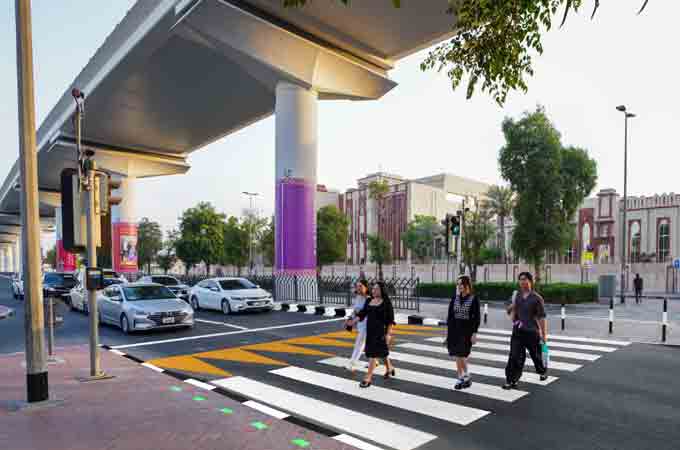Dubai’s Roads and Transport Authority (RTA) has completed Phase Two of the Smart Pedestrian Signal Expansion Project, which involved the installation of smart pedestrian signals at 10 additional locations across the emirate.
With Phase One having covered 17 intersections, the total number of sites now equipped with smart pedestrian signals has reached 27.
Under this initiative, RTA aims to leverage cutting-edge smart technologies to advance traffic systems, enhance road safety, and streamline pedestrian and vehicular movement.
These efforts support Dubai’s drive to position itself as a global leader in intelligent infrastructure and sustainable mobility.
Mohammed Al Ali, Director of Intelligent Traffic Systems at RTA’s Traffic and Roads Agency, said: "The locations covered in this phase include intersections along Omar Bin Al Khattab Street, Sheikh Khalifa Bin Zayed Street, Al Satwa Street, Salah Al Din Street, Amman Street, Al Qusais Street (near labour camps), and Oud Metha Street (in front of the school zone)."
"Results have shown improved safety levels at these pedestrian crossings since the signals became operational, demonstrating the system’s effectiveness in mitigating risk and enhancing the overall road experience for all users," he stated.
"The smart pedestrian signal system relies on advanced detection technologies using intelligent thermal cameras. These cameras operate around the clock, accurately detecting the presence and movement of pedestrians on sidewalks and while crossing, even in low-light or night-time conditions," he noted.
"The system integrates with push-button devices to register actual crossing requests, thereby enhancing signal efficiency and optimising timing control," he added.
Al Ali said: "The smart signals are equipped with dynamic sensors that automatically adjust signal timings in real-time based on pedestrian speed. This capability enhances safety for seniors, People of Determination, and children, while also improving traffic flow by reducing unnecessary vehicle stops."
According to him, RTA selects target locations based on lessons learned and a multi-criteria evaluation matrix.
Key considerations include the proximity of pedestrian crossings to each other, the rate of pedestrian-related incidents at the location, road classification (including designated speed limits and the number of lanes per direction), the availability and accessibility of pedestrian bridges, and the overall road design.
"These factors collectively determine the feasibility and impact of installing a smart pedestrian signal at a specific site," he added.-TradeArabia News Service































